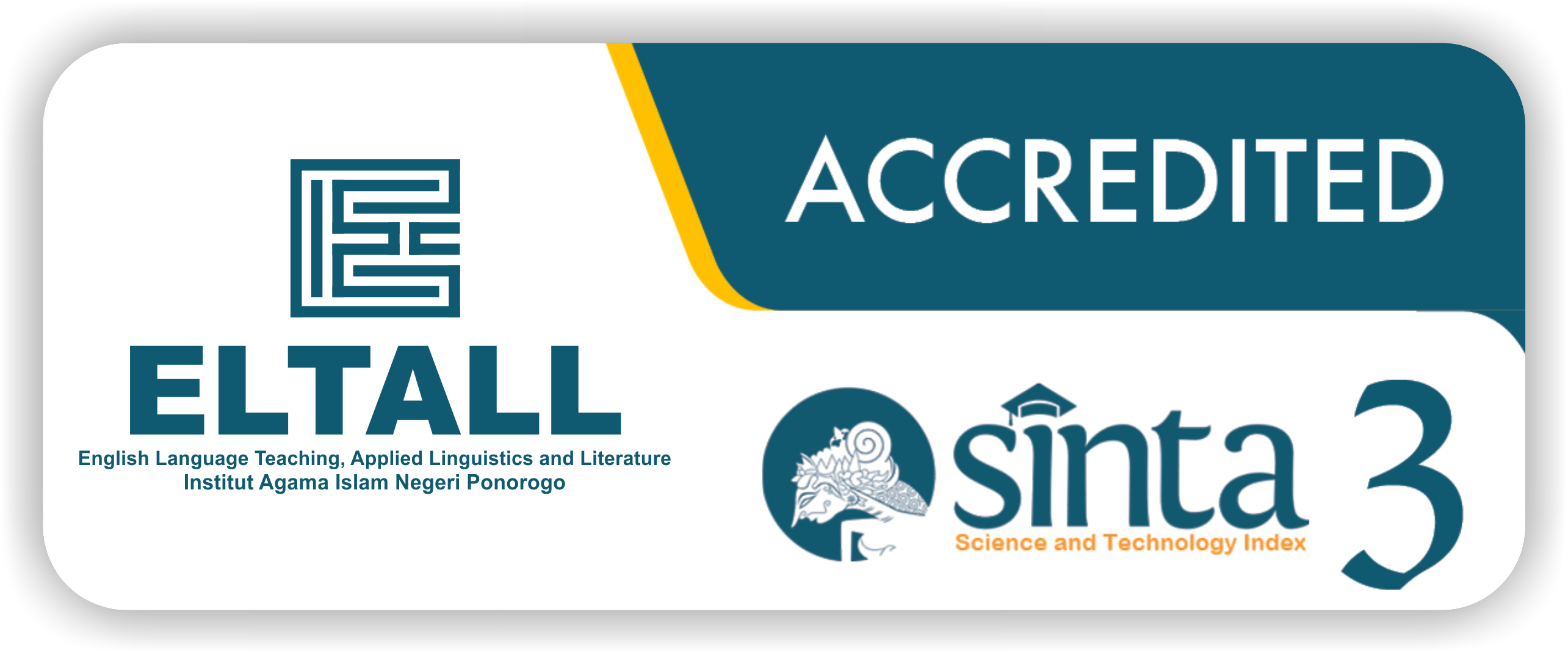Communicative Classroom English of Pre-service Teachers
DOI:
https://doi.org/10.21154/eltall.v4i02.5919Keywords:
classroom English, pre-service teachers, classroom communicationAbstract
Classroom language shapes the way teachers communicate/ Interact in the classroom. Based on medium of Instruction the teacher has to be aware of the language phrases and expressions appropriate for the classroom situations. The NCF National Curriculum Framework (2005, 2009) of India mentioned the need of classroom English for teachers. The importance of classroom communication is highlighted in the B.ED. syllabuses prepared by the NCERT (National Council for Educational Research and Training) and SCERTs (State Council of Educational Research and Training). The present study considers the need for classroom English for pre-service teachers before they enter the profession. Previous research studies included testing of the classroom English language proficiency of in-service teachers of English subject. In addition to that, current study focuses on pre-service teachers of all subjects and their awareness of classroom English. For this purpose an online test was conducted with 36 pre-service teachers from different B.Ed. Institutions, Telangana and Andhra Pradesh, India. The results indicate that pre-service teachers should be given training to raise their awareness of Communicative English language phrases and expressions used for different classroom situations such as classroom management, content delivery, and feedback. The study has got implications for verbal and non-verbal classroom communication, and use of L2 (Second language) for classroom purposes.
References
Burns, A. (2017). Classroom English proficiency: What can be learned from the Vietnam experience. Developing Classroom English Competence: Learning from the Vietnam Experience, 84”“94.
Freeman, D., Katz, A., LeDréan, L., Burns, A., & Hauck, M. (2013). The ELTeach Project””Report on the Global Pilot, 2012. Boston, MA: National Geographic Learning.
Fu, Y., & Wang, J. (2021). Assessing Mainstream Pre-Service Teachers’ Self-Efficacy to Teach English Language Learners. International Journal of Instruction, 14(3), 153”“174.
Ghonsooly, B., Khajavy, G. H., & Asadpour, S. F. (2012). Willingness to communicate in English among Iranian non”“English major university students. Journal of Language and Social Psychology, 31(2), 197”“211.
NCTE. (2009). National curriculum framework for teacher education. National Council for Teacher Education New Delhi, India.
Research, N. C. of E., & (India), T. (2005). National curriculum framework 2005. National Council of Educational Research and Training.
Richards, J. C. (2017). Teaching English through English: Proficiency, pedagogy and performance. RELC Journal, 48(1), 7”“30.
Walsh, S., & Li, L. (2013). Conversations as space for learning. International Journal of Applied Linguistics, 23(2), 247”“266.
Website: NCERT B.ED. syllabus
chrome-extension://efaidnbmnnnibpcajpcglclefindmkaj/https://ncert.nic.in/pdf/syllabus/Syllabus_BEd.pdf
Downloads
Published
How to Cite
Issue
Section
License
All articles published in ELTALL (English Language Teaching, Applied Linguistics, and Literature Journal) are licensed under the Creative Commons Attribution-NonCommercial 4.0 International License (CC BY-NC 4.0).
Under this license, authors and readers are free to:
- Share. copy and redistribute the material in any medium or format
- Adapt. remix, transform, and build upon the material
Under the following terms:
- Attribution. You must give appropriate credit, provide a link to the license, and indicate if changes were made. You may do so in any reasonable manner but not in any way that suggests the licensor endorses you or your use.
- Non-Commercial. You may not use the material for commercial purposes.
Notices:
- The licensor cannot revoke these freedoms as long as you follow the license terms.
- No additional restrictions. You may not apply legal terms or technological measures that legally restrict others from doing anything the license permits.
For the full legal code of the license, please visit: https://creativecommons.org/licenses/by-nc/4.0/













